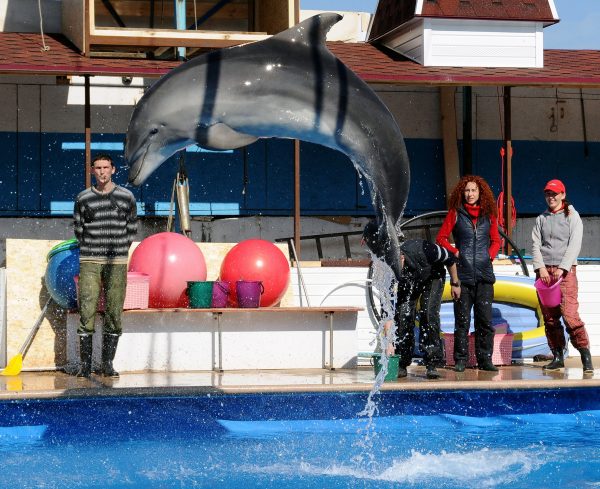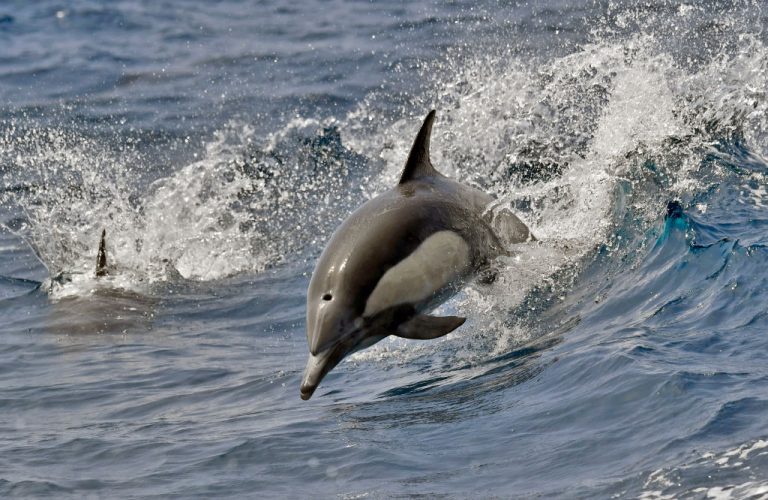According to a report published by the U.S. Naval Institute (USNI) on April 27, satellite imagery suggests that Russia has deployed military-trained dolphins in the Black Sea purportedly to provide protection for one of its key naval bases in the area.
The imagery, captured in February just prior to Russia launching its “special military operation” in Ukraine shows that the Russian Navy placed two dolphin pens at the entrance of the Sevastopol harbor, sheltered just inside a sea wall.
Sevastopol is Russia’s key naval base in the Black Sea. It has a long history dating back to 1772 when construction of the base began during the Russo-Turkish War (1768–1774). The base is completely located within the administrative territory of Sevastopol.
The USNI believes the dolphins may be tasked with counter-diver operations, a role both the U.S. and Russia have trained marine mammals for.
The deployment of the dolphins is believed to be an attempt to prevent Ukrainian special operations forces from infiltrating the harbor underwater to sabotage warships. Numerous high-value Russian Navy ships are stationed at the base, out of range of Ukrainian missiles; however they remain vulnerable to undersea sabotage.
Success
You are now signed up for our newsletter
Success
Check your email to complete sign up
Russia began training sea mammals including dolphins, beluga whales and seals for military duties during the Cold War when the Soviet Navy established several marine mammal programs. A unit, consisting entirely of dolphins, has been based at Kazachya Bukhta near Sevastopol for decades, but operations were severely disrupted after the collapse of the Soviet Union in 1991.
At the time, the unit transitioned to the Ukrainian military. While there were attempts to keep the unit operational, it struggled to remain open. Following Russia’s annexation of Crimea in 2014, the unit again came under Russian Navy control. Subsequently, marine mammal programs were expanded and returned to operational service.
According to forces.net, Viktor Baranets, a retired Russian colonel who observed military dolphin training in the Soviet and post-Soviet eras, said that the mammals were part of the broader Cold War arms race between the U.S. and the USSR. He told AFP, “Americans looked into this first. But when Soviet intelligence found out the tasks the U.S. dolphins were completing in the 1960s, the defence ministry at the time decided to address this issue.”
READ MORE:
- Russia’s March Through Izyum Could Determine Fate of Ukrainian Eastern Front
- Russia Tests New RS-28 Missile Capable of ‘Striking Any Target on Earth’
- Russia Admits Heavy Pressure Under Sanctions, But Says Its Economy Far From Collapse

What are they used for?
Dolphins are adept at spotting suspicious objects or individuals near harbors and ships, as well as detecting submarines and underwater mines.
A dolphin’s ability to use sonar is unmatched by any modern sonar technologies ,making the dolphin an indispensable tool for intelligence gathering at sea.
Due to the secrecy surrounding marine mammal programs in both the U.S. and Russia speculation has run wild over the years concerning the capabilities and uses of marine animals in warfare.
Rumors have surfaced that military dolphins have been trained to lay underwater mines, locate enemy fighters, and even to seek and destroy submarines using kamikaze methods.
“It has even been speculated that dolphins have been used to carry poison darts and sonar jamming devices, with the potential for combat between different countries’ marine mammals also discussed,” Forces.net reported.
The U.S. Navy denies having ever trained a marine mammal to injure humans or to carry weapons capable of destroying ships.
However, it has been established that dolphins were deployed during both Gulf Wars, and sea lions were deployed to Bahrain in 2003 to support Operation Enduring Freedom following 9/11.














